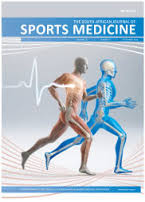The determinants of overweight/obesity and blood pressure in rural South African women living in the Tshino Nesengani (Mukondeleli) village
DOI:
https://doi.org/10.17159/2078-516X/2018/v30i1a5066Abstract
Background: The purpose of this cross-sectional study was to investigate whether bio-behavioural factors are associated with blood pressure and body composition in rural black South African women.
Methods: Data were collected on 200 African women living in the Tshino Nesengani (Mukondeleli) village, Limpopo Province using simple anthropometry, blood pressure, and validated self-reported questionnaires for sleep, physical activity, and sugar sweetened beverage (SSB) consumption.
Results: Six patterns of SSB consumption were determined by principal component analysis. Regression analysis showed that longer sleep duration (?9 hours/night) was associated with lower systolic and diastolic blood pressures; whilst principal component 2 (beer, wine, and sweetened tea) was associated with higher body mass index.
Conclusions: These findings highlight novel bio-behavioural contributors of blood pressure and body anthropometry in rural African women.
Downloads
Downloads
Published
Issue
Section
License
The South African Journal of Sports Medicine reserves copyright of the material published. The work is licensed under a Creative Commons Attribution 4.0 (CC BY 4.0) International License. Material submitted for publication in the South African Journal of Sports Medicine is accepted provided it has not been published elsewhere. The South African Journal of Sports Medicine does not hold itself responsible for statements made by the authors.
How to Cite
- Abstract 1192
- PDF 801






.png)